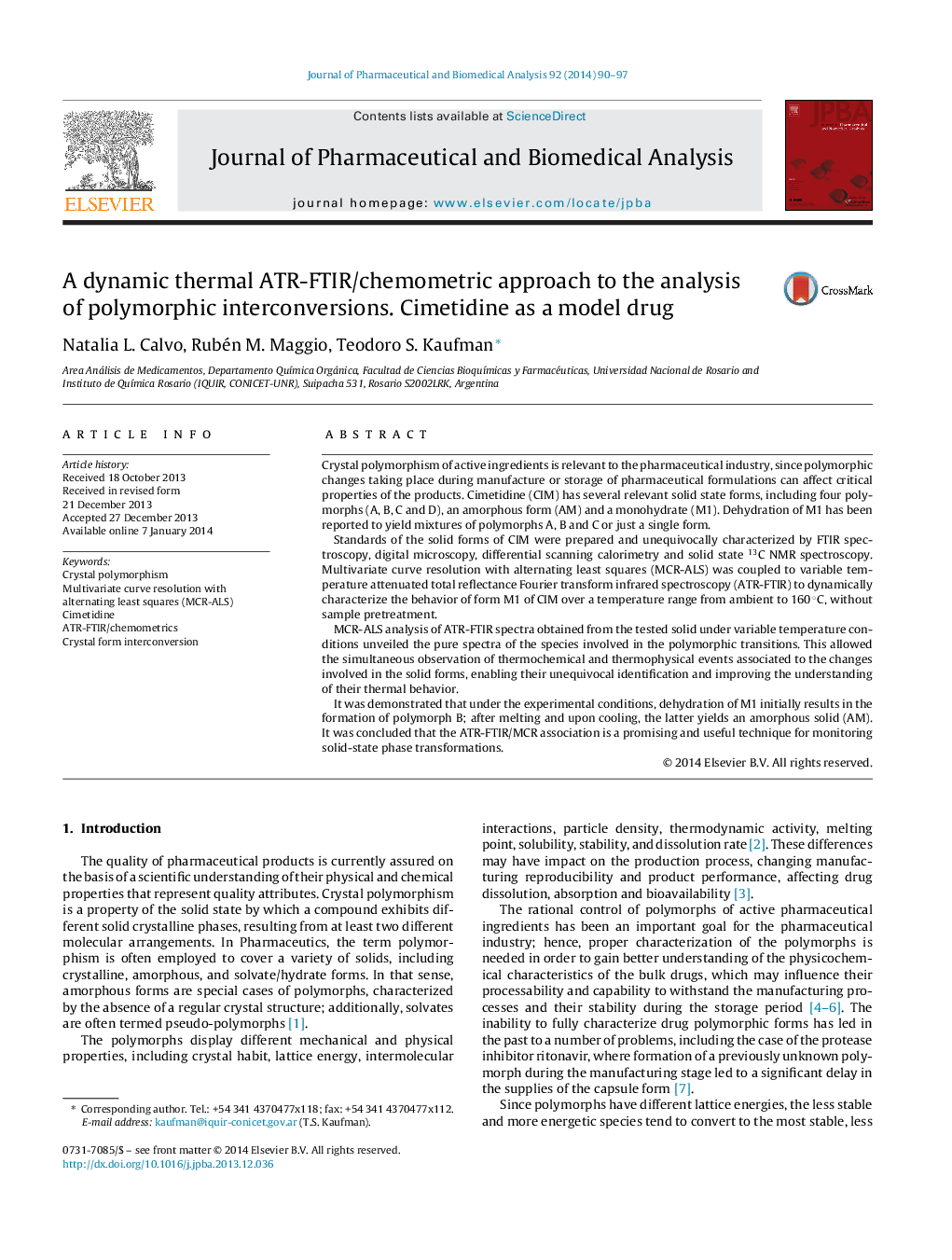| Article ID | Journal | Published Year | Pages | File Type |
|---|---|---|---|---|
| 1221753 | Journal of Pharmaceutical and Biomedical Analysis | 2014 | 8 Pages |
•Green Analytical Chemistry approach to polymorphic transformation assessment.•Chemometrics method is successful for time-evolving ATR-FTIR spectral data analysis.•Vibrational spectroscopy applied to the study of cimetidine polymorphism.•Chemometrics method used to monitor polymorphic transformations of cimetidine.•Real time monitoring of polymorphic conversion of form M1 to form B and then to AM.
Crystal polymorphism of active ingredients is relevant to the pharmaceutical industry, since polymorphic changes taking place during manufacture or storage of pharmaceutical formulations can affect critical properties of the products. Cimetidine (CIM) has several relevant solid state forms, including four polymorphs (A, B, C and D), an amorphous form (AM) and a monohydrate (M1). Dehydration of M1 has been reported to yield mixtures of polymorphs A, B and C or just a single form.Standards of the solid forms of CIM were prepared and unequivocally characterized by FTIR spectroscopy, digital microscopy, differential scanning calorimetry and solid state 13C NMR spectroscopy. Multivariate curve resolution with alternating least squares (MCR-ALS) was coupled to variable temperature attenuated total reflectance Fourier transform infrared spectroscopy (ATR-FTIR) to dynamically characterize the behavior of form M1 of CIM over a temperature range from ambient to 160 °C, without sample pretreatment.MCR-ALS analysis of ATR-FTIR spectra obtained from the tested solid under variable temperature conditions unveiled the pure spectra of the species involved in the polymorphic transitions. This allowed the simultaneous observation of thermochemical and thermophysical events associated to the changes involved in the solid forms, enabling their unequivocal identification and improving the understanding of their thermal behavior.It was demonstrated that under the experimental conditions, dehydration of M1 initially results in the formation of polymorph B; after melting and upon cooling, the latter yields an amorphous solid (AM). It was concluded that the ATR-FTIR/MCR association is a promising and useful technique for monitoring solid-state phase transformations.
Graphical abstractFigure optionsDownload full-size imageDownload as PowerPoint slide
